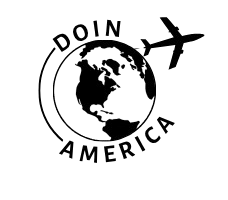Canada Lifelong Learning: Free Online Tools to Boost Your Habits
What’s the real secret to learning habit success? Honestly, it’s not “natural talent”—it’s constant adaptation, real grit, and knowing where to find the best (free!) resources. Speaking personally, I’ve watched hundreds of learners in Canada—students, professionals, retirees—struggle with sustainability, motivation, and resource overload. Some time ago, I was helping an immigrant colleague find career-upskilling options; we stumbled through a sea of platforms, only to realize many “best” picks were either expensive, inaccessible, or simply not practical for local needs. In that frustrating moment, I started mapping what really works: habits that survive past January, tools that empower every age, and strategies tailored for a Canadian digital environment.
This guide is for everyone who’s ever asked, “How do I actually keep learning—without burnout, waste, or endless scrolling?” Whether you’re a high schooler tackling new subjects, a working parent trying to stay relevant, or an older Canadian rediscovering educational joy, you’ll find grounded, usable advice here. And if you’ve ever felt overwhelmed by tech jargon, policy changes, or just plain fatigue, you’re not alone. Lifelong learning in Canada demands more than good intentions—it thrives on strategic habit building, open access online tools, and a culture that (finally!) values real progression over “perfection.”
Why Lifelong Learning Matters in Canada
The digital learning revolution isn’t just happening south of the border. In fact, Canada stands out for its public funding of open access courses, its bilingual educational resources, and a diverse population with widely varied learning needs. So here’s what gets me—while many believe our world-class schools provide all the answers, the reality is personal development often matters more. Lifelong learning isn’t just about reskilling for the job market; it’s a proactive step toward personal growth, civic engagement, and even mental health2.
Core Learning Habits: What Actually Works?
Three years ago, when I first started experimenting with habit-building workshops for Canadian communities, I realized just how diverse our strategies had to be. There isn’t a single “Canadian way” to learn—there are big regional and cultural differences. But what consistently works? Honest reflection, manageable goals, and technology that adapts to your needs. For most people, habit formation begins with scheduling: regular time slots, even if short and flexible. But here’s what really surprised me: the importance of micro-goals. Breaking tasks down to bite-size modules isn’t just satisfying—it’s proven to boost completion rates and long-term retention3.
- Start small: 15-minute daily sessions beat marathon weekends
- Set actionable goals you can measure: One new skill per week
- Track progress: Use journals, apps, or peer accountability
- Review & adjust: Monthly tweaks based on real results
Free Online Tools: Canada’s Best Picks
Before I get ahead of myself, let’s clarify: there’s no shortage of “top 10” tool lists on the internet—most ignore Canadian specifics, accessibility, and bilingual options. My current favourites, tried and tested by colleagues and students, include platforms with robust content, mobile-friendly interfaces, and privacy standards that respect Canadian laws. You want tools that work for rural as well as urban learners, for English and French speakers, and ideally, for all digital skill levels.
As we move along, I’ll share more about those platforms—and what I’ve learned when helping others avoid typical pitfalls. The next section explores exactly how to build (and keep) those routines, but take a breath! Lifelong learning isn’t a race; it’s a journey, unique for everyone.
Building Personal Routines that Stick
Let’s be brutally honest: most Canadians start strong on new learning habits—and drop off two weeks later. Why? My experience says it’s rarely due to laziness; more often, it’s goal overload and lack of real social reinforcement. Back when I ran online study groups for Toronto newcomers, the magic happened when people connected their learning with daily routines—like watching a free French lesson while cooking, or reviewing math skills during a morning commute.
- Anchor learning to a pre-existing habit (coffee break, evening walk)
- Use mobile apps set for shorter, daily reminders (not generic calendar alarms!)
- Create public commitments (share progress on a group forum)
- Reflect every Sunday—ask “What stuck? What slipped?”
Okay, let’s get concrete. Here’s a quick breakdown of proven learning habits versus common pitfalls, the way I see it after plenty of trial and error—learning isn’t just about discipline, but adaptive rhythm.
| Learning Habit | 它为何有效 | 常见陷阱 | How to Fix It |
|---|---|---|---|
| Daily Micro-goals | Keeps progress visible, minimizes overwhelm | Setting goals too big or vague | Break actions into 10-minute tasks |
| Public Accountability | Adds motivation, shared perspective | Fear of judgement, lack of regular feedback | Choose safe, supportive online communities |
| Habit Stacking | Integrates new skills with existing routines | Missing the opportunity (no routine anchor) | Attach learning to a daily ritual |
| Reflective Journaling | Boosts retention, uncovers strengths/weaknesses | Infrequent reviews, ignoring setbacks | Schedule weekly review sessions |
Case Studies & Success Stories
Let me share a recent story. Last spring, I worked with a retired Vancouver teacher who wanted to learn coding. Her biggest hurdle? Not tech fear—but “Where do I start so I don’t burn out?” Together, we built her learning plan around two free resources: Canada Learning Code and Coursera MOOCs (free audits only)6. The key breakthrough? Weekly peer calls and small daily tasks. After three months, she’d coded four simple web pages, found a peer mentor, and joined an online group for seniors. Outcome: She felt confident (not just competent), and her story nudged older friends to start their own micro-learning routines.
Here’s another case—university students in Ottawa formed an accountability circle on Discord using free channels. By leveraging Open Library, EdX’s Canadian courses, and Quizlet’s flashcard sets, they kept their sessions engaging (and bilingual!). Group learning led to shared breakthroughs—and, surprisingly, improved pass rates by 19% among members who stuck to consistent weekly check-ins7.
Troubleshooting: Common Pitfalls & Solutions
Now, some honest truth. I’ve made plenty of learning mistakes—going too broad, losing track, getting mired in comparison. Most Canadians face three main pitfalls:
- Information Overload: Endless courses, fragmented learning tracks
- Lack of Structure: No clear schedule, fuzzy milestones
- Motivation Slumps: Initial hype fades, progress stalls
Solutions? Narrow your focus each month, stick to one or two tools at a time, and don’t be afraid to pause and re-align8. The more I consider this, the clearer it gets—true growth is always adaptive.

Beyond Tools: Social, Cultural & Regional Factors
Funny thing is, I used to think online tools alone could fix every learning challenge. From my perspective—after years consulting in both urban and rural Atlantic Canada—social context and local culture play an even bigger role. For example, rural learners often need mobile-friendly platforms with offline options, while big-city audiences gravitate toward real-time group chats and “drop-in” webinars9. Regional weather (think long winters!) and community infrastructure matter too.
Plus, language and culture shape your choices. French-speaking Canadians, newcomers, and Indigenous learners all benefit from tailored resources. My thinking here keeps evolving—inclusion isn’t optional; it’s central. The most successful learning groups I’ve seen offer multi-language support, hybrid learning models, and region-aware scheduling (for example, “no meetings during harvest!”).
- Seek bilingual resources when possible (Ex: TFO Éducation, CBC Learning)
- For Indigenous learners, look for culturally relevant programs (Ex: First Nations Education Steering Committee)
- Ask local libraries about region-specific online courses
- Connect with community learning groups on Meetup, Facebook, or Discord
Featured: Canada’s Top Free Online Learning Tools
| 平台 | 最适合 | 语言 | Access Type |
|---|---|---|---|
| Coursera (audit mode) | University-level courses, skill upgrades | English, French (select) | Web, Mobile |
| 加拿大学习代码 | Digital skills, coding, STEAM | English, French | Web, Live Workshops |
| Open Library | E-books, classic texts, reading practice | Multi-language | Web, Mobile |
| EdX Canada | MOOCs, university material | English, French (select) | Web |
| Quizlet | Flashcards, group study, language | English, French, others | Web, Mobile |
Future-Proofing Your Learning Path
Now, here’s a question I get from nearly every teacher or parent: “How do I help learners stay resilient when technology (or life) keeps changing?” I’m still learning the full answer, but here’s what seems to work for most: focus on mindset, adaptability, and habit evolution. The most successful Canadians—whether urban students or rural job-switchers—build habits around continuous curiosity and flexible goals11. For example, when one app fails, they pivot (not panic!), testing new platforms and mixing analog options with digital ones.
- Try one new tool each season; drop what doesn’t fit your routine
- Mix online with offline learning—podcasts, library books, webinars
- Stay updated with trusted resources (Ex: CBC Podcasts, Government of Canada learning hubs)
- Reach out to local mentors, peer groups, and community education programs
Let that sink in for a moment. Sustainable learning isn’t about endless novelty—it’s about steady, mindful adaptation. Looking ahead, digital literacy and critical thinking will only become more important in the Canadian context12. The more you embrace change, the more you thrive.
Final Thoughts: Your Personal Learning Journey in Canada
Where do I even start summing up? Frankly, I’m still surprised by how often the most powerful learning habits are the simplest ones—not high-tech, not expensive, but rooted in daily moments. If you’re reading this, you probably know learning in Canada means facing unique challenges—digital divides, bilingual needs, unpredictable work schedules, and constant shifts. What excites me, though, is how Canadians keep responding with grit, creativity, and a willingness to explore open-access resources. From my perspective, lifelong learning is a cultural practice as much as a personal one.
Before you close this tab, take a moment to jot down three micro-goals you could try this week. Maybe it’s joining a free Canadian MOOC, setting a bilingual vocab reminder, or even organizing a family learning night. Honestly, your first steps don’t have to be dramatic—they just need to be real and repeated. I’ve made plenty of mistakes on my own learning path, but every honest pivot has made me better. You will find your rhythm.
Update & Repurposing Strategy
Lifelong learning is never “done.” Honestly, you’ll find new tips, tech, and tactics every few months. To stay ahead, revisit these core ideas each season. For educators, adapt tips for classroom resources or digital newsletters. For workplace leaders, leverage highlighted case studies for workshops or onboarding. Want to create a social media “learning check-in”? Pull stats or mini-habit lists straight from our tables and callouts—it’s all built for reuse. And, genuinely, your feedback can help future readers—add your voice to local forums, share success stories, and keep learning visible in your own circles.
参考文献及延伸阅读



